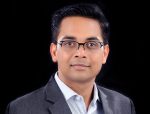Complexity of decision making in the VUCA world
In today’s VUCA (Volatile, Uncertain, Complex and Ambiguous) business environment, the decision makers are increasingly required to make decisions at speed, in a dynamic and ever evolving uncertain environment. Contextual knowledge including cognizance of dynamic external factors is critical, and the decisions need to be made in an iterative manner employing ‘test & learn’ mindset. This can be effectively achieved through Decision Automation Solutions that leverage AI and ML to augment the expert human driven decision-making process.
Incedo LighthouseTM for Automated Decision Making
Incedo LighthouseTM an AWS cloud native platform has been designed and developed from the ground up to automate the entire process of decision making. It has been developed with the following objectives:
- Distill signal from noise: The right problem areas to focus on are identified by organizing KPIs into a hierarchy from lagging to leading metrics. Autonomous Monitoring and Issue Detection algorithms are further applied to identify anomalies that need to be addressed in a targeted manner. Thereby, effectively identifying crucial problem areas that the business should focus its energy on, using voluminous datasets that are updated at frequent intervals (typically daily).
- Leverage context: Intelligent Root Cause Analysis algorithms are applied to identify the underlying behavioral factors through specific micro-cohorts. This enables action recommendations that are tailored to specific cohorts as opposed to generic actions on broad segments.
- Impact feedback loop: Alternate actions are evaluated with controlled experiments to determine the most effective actions – and use that learning to iteratively improve outcomes from the decisions.
Incedo LighthouseTM is developed as cloud-native solution leveraging several services and tools from AWS that make the process of executive decisions highly efficient and scalable.
Incedo LighthouseTM implements a powerful structure and workflow to make the data work for you via a virtuous problem-solving cycle with an aim to deliver consistent business improvements through automation of 6-step functional journey of Problem Structuring & Discovery to Performance Improvement to Impact Monitoring.

Step 1: Problem Structuring – What is the Problem?
In this step, the overall business objective is converted into a specific problem statement(s) based on Key Performance Indicators (KPIs) that are tracked at the CXO level. The KPI Tree construct is leveraged to systematically represent problem disaggregation. This automation enhances the decision making process by enabling a deeper understanding of the issue and its associated variables. Incedo LighthouseTM provides features that aid the KPI decomposition step, such as KPI repository, self-serve functionality for defining the structure of KPI trees and publish those with latest raw data automatically.
Step 2: Problem Discovery – Where is the problem?
Here the objective is to attribute the anomalies observed in performance, which are significant deviations from the performance trend, to a set of customers / accounts / subscribers. Incedo LighthouseTM provides features, which are a combination of rule-based and anomaly detection algorithms, that aid in identifying most critical problem areas in the KPI trees, such as Time Series Anomaly Detection Non-time series Anomaly Detection, Cohort Analyzer and Automated Insights.
Step 3: Root Cause Analysis – Why is there a problem?
Once the problem is discovered at the required level of granularity, identification of the root causes that drive the business performance becomes critical. To automate the root cause identification for every new or updated data set the Root Cause Analysis must be packaged into a set of pre-defined and pre-coded model sets that are configurable and can be fine-tuned for specific use case scenarios. Incedo LighthouseTM enables this using pre-packaged configurable model sets, the output of which is presented in a format that is conducive for the next step, which is, action recommendations. These model sets include Clustering, Segmentation and Key Driver Analyzer.
Step 4: Recommended Actions
However sophisticated the algorithms are, if the workflow stops at only delivering the insights using anomaly detection and root cause analyzer etc, it would still be a lost cause. Why? Because the executives are not supported with recommendations to take corrective, preventive or corroborative actions based on the insights delivered. Incedo LighthouseTM incorporates the Action Recommendation module that enables the actions to be created at each cohort (customer microsegment) level for a targeted corrective or improvement treatment based on its individual nuance. The Action Recommendation module helps define and answer questions for each cohort: What is the action, Who should be the target for the action, and When the actions should be implemented and state the Goal of the action in terms of KPI improvement target.
Step 5: Experimentation
Experimentation is testing various actions on a smaller scale, and being able to select the optimal action variant that is likely to produce the highest impact when implemented on full scale. Incedo LighthouseTM has a Statistical Experimentation engine that supports business executives to make informed decisions on actions to be undertaken. Some of the key features of the module are: Choice of the experiment type from the options such as A/B Testing, Pre vs. Post etc., Finalization of the target population and Identification of the success metrics and define targets.
Step 6: Impact Monitoring
Post full scale implementation of actions, through their seamless integration into organization’s operating workflows, tracking their progress on an ongoing basis is critical for timely interventions. Our platform ensures that the actions are not merely implemented but are continuously monitored for their impact on key performance indicators and business outcomes.
A two-way handshake is required between Incedo LighthouseTM and the System of Execution (SOE) that is used as an operations management system to continually monitor the impact of the actions on ground. Incedo LighthouseTM covers the following activities in this step – Push Experiments/Actions, Monitor KPIs, and Experiment Summary.
Incedo LighthouseTM in AWS environment
Infrastructure to host the Incedo LighthouseTM platform plays an important role in the overall impact that the platform creates on business improvements through better and automated decision making. In cases where the clients are already leveraging the AWS Cloud, the Incedo LighthouseTM implementation takes advantage of the following AWS native services that provides significant efficiencies for successive deployments and ongoing service to the business users. A few of the AWS Services prominently used by Incedo LighthouseTM are:
AWS Compute: AWS provides scalable and flexible compute resources for running applications and workloads in the cloud. AWS Compute services allows the companies to provision virtual servers, containers, and serverless functions based on application’s requirements, and enable pay for what you use, making it a cost-effective and scalable solution. Key compute services used in Incedo LighthouseTM are: Amazon EC2 (Elastic Compute Cloud), AWS Lambda, Amazon ECS (Elastic Container Service) and Amazon EKS (Elastic Kubernetes Service).
AWS Sagemaker: There are various ML models that are the brain behind various modules in Incedo LighthouseTM the Anomaly Detection, Cohort Analyzer, Action Recommendation and Experimentation etc. All these models are developed, trained, validated and deployed via AWS Sagemaker.
AWS Glue: The large amount of frequently updated data in various source systems that is needed by the ML models is brought into the common analytical storage (data mart/ data warehouse/ data lake) etc. using AWS Glue jobs that implement ETL or ELT logic along with value add processes such as data quality checks and remediation.
Incedo LighthouseTM boosts effectiveness and efficiency of executive decision making with the power of AI. As a horizontal cloud-native platform powered by AWS, it is the key to achieving consistent business improvements across domains and use cases.





